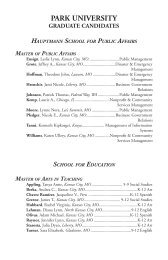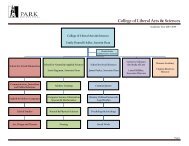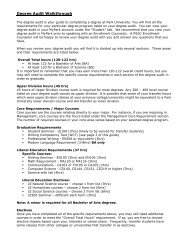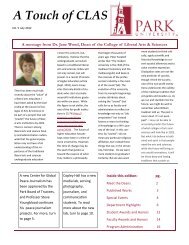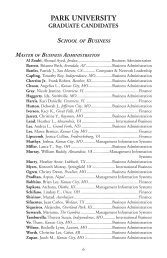How to Write a Radio Serial Drama for Social Development- PDF
How to Write a Radio Serial Drama for Social Development- PDF
How to Write a Radio Serial Drama for Social Development- PDF
Create successful ePaper yourself
Turn your PDF publications into a flip-book with our unique Google optimized e-Paper software.
Chapter Five: Character <strong>Development</strong> 81<br />
EXAMPLE<br />
21. DOCTOR: I suppose it was about that time I began <strong>to</strong> realize that it is not<br />
(as narra<strong>to</strong>r) enough <strong>for</strong> a doc<strong>to</strong>r <strong>to</strong> try <strong>to</strong> cure diseases; he must also work at<br />
preventing them. I saw a whole new focus <strong>for</strong> my life, and I began<br />
<strong>to</strong> see that one of the major causes of the disease and misery on this<br />
island was the sheer number of its inhabitants—and they were<br />
increasing rapidly. I think that’s when I moved from being a doc<strong>to</strong>r<br />
<strong>to</strong> being an advocate. (FADING OUT) I first spoke up about<br />
family planning at a church meeting...<br />
22. FX. CHURCH BELLS. NOISE OF CONGREGATION SETTLING<br />
IN CHURCH.<br />
23. DOCTOR: (FADING IN) And so, my friends, I want <strong>to</strong> speak <strong>to</strong> you <strong>to</strong>day<br />
(as character) about a subject that is of great importance <strong>to</strong> all of us...family size...<br />
5<br />
The action then continues in dramatic from, as the doc<strong>to</strong>r addresses the<br />
church meeting.<br />
When a serial includes a first-person narra<strong>to</strong>r, like the doc<strong>to</strong>r, he (or she)<br />
should be used in every episode so that listeners accept the idea that the<br />
narra<strong>to</strong>r is both telling his (or her) own s<strong>to</strong>ry and taking part in it. The<br />
dramatic interludes are essentially an extension of the narrated s<strong>to</strong>ry. For this<br />
reason, the first-person narra<strong>to</strong>r reveals a great deal about himself (or herself)<br />
during the personal narration segments. This type of narra<strong>to</strong>r acts, not as a<br />
disembodied commenta<strong>to</strong>r, but as a person in his (or her) own right.<br />
2. The third-person narra<strong>to</strong>r. Like the first-person narra<strong>to</strong>r, the thirdperson<br />
narra<strong>to</strong>r introduces and closes the s<strong>to</strong>ry and connects different<br />
places and times. The third-person narra<strong>to</strong>r, however, usually fills the<br />
additional role of commenta<strong>to</strong>r, helping listeners <strong>to</strong> understand what is<br />
happening in the s<strong>to</strong>ry and guiding their responses <strong>to</strong> it. In order not <strong>to</strong><br />
compete with the personalities of the characters in the s<strong>to</strong>ry, the thirdperson<br />
narra<strong>to</strong>r usually reveals little personality.<br />
In the following excerpt, the narra<strong>to</strong>r comments on the events taking<br />
place in a nation. The narra<strong>to</strong>r never uses the first person pronoun, “I,” as<br />
the Doc<strong>to</strong>r did in the previous example, and reveals nothing of his own<br />
personality.





